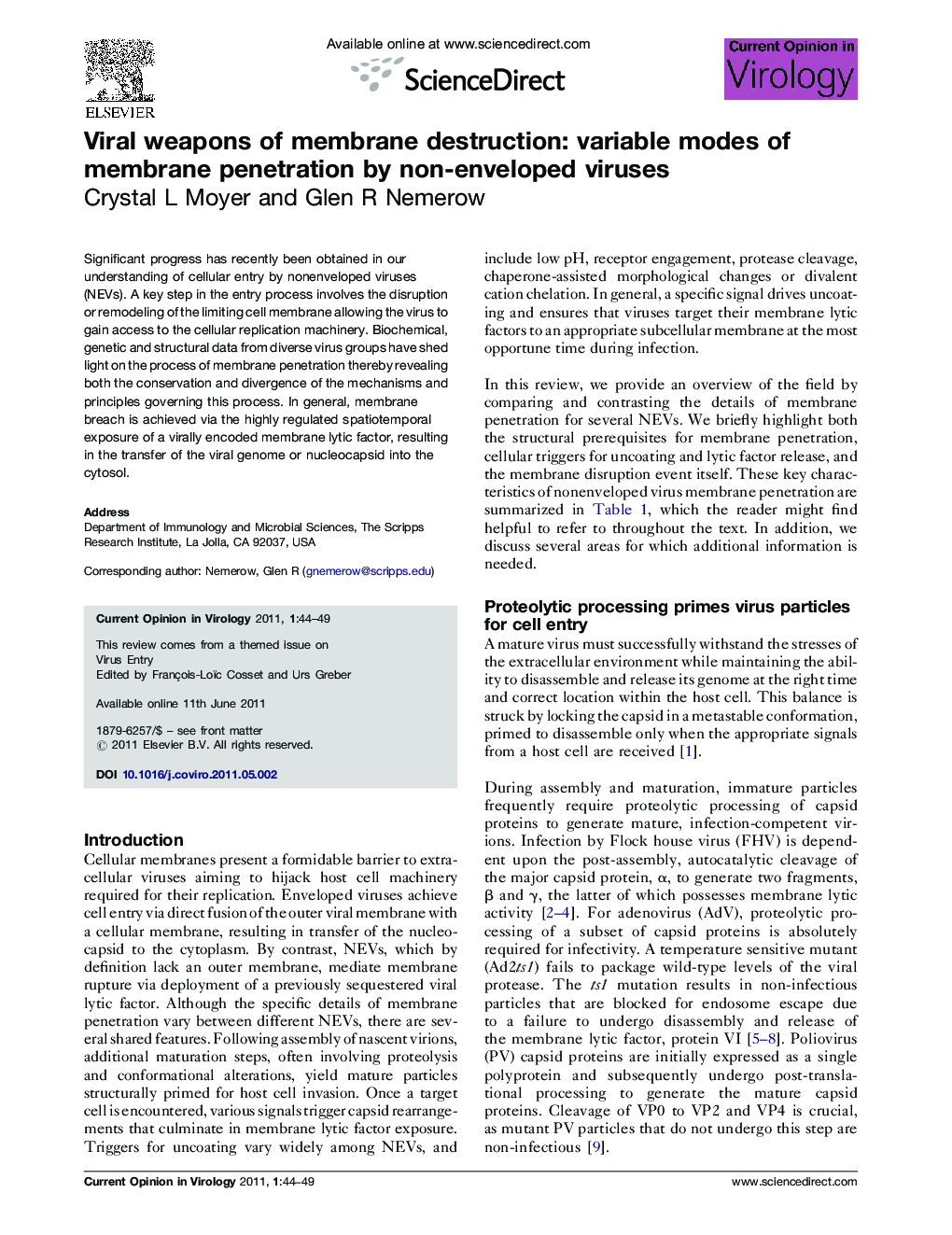| Article ID | Journal | Published Year | Pages | File Type |
|---|---|---|---|---|
| 2473482 | Current Opinion in Virology | 2011 | 6 Pages |
Significant progress has recently been obtained in our understanding of cellular entry by nonenveloped viruses (NEVs). A key step in the entry process involves the disruption or remodeling of the limiting cell membrane allowing the virus to gain access to the cellular replication machinery. Biochemical, genetic and structural data from diverse virus groups have shed light on the process of membrane penetration thereby revealing both the conservation and divergence of the mechanisms and principles governing this process. In general, membrane breach is achieved via the highly regulated spatiotemporal exposure of a virally encoded membrane lytic factor, resulting in the transfer of the viral genome or nucleocapsid into the cytosol.
► Nonenveloped viruses (NEVs) encode lytic factors that mediate membrane disruption. ► Lytic factors are sequestered until a target cell compartment is encountered. ► Cellular cues trigger capsid structural rearrangements and lytic factor release. ► The precise modes of membrane perturbation by NEVs remain unknown.
